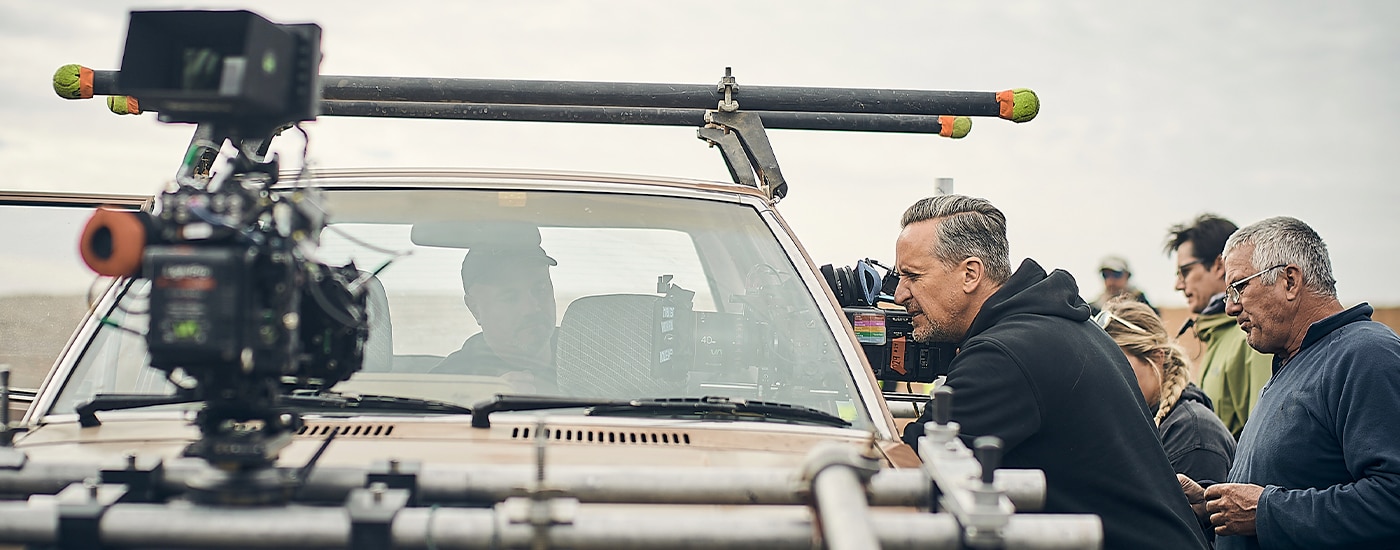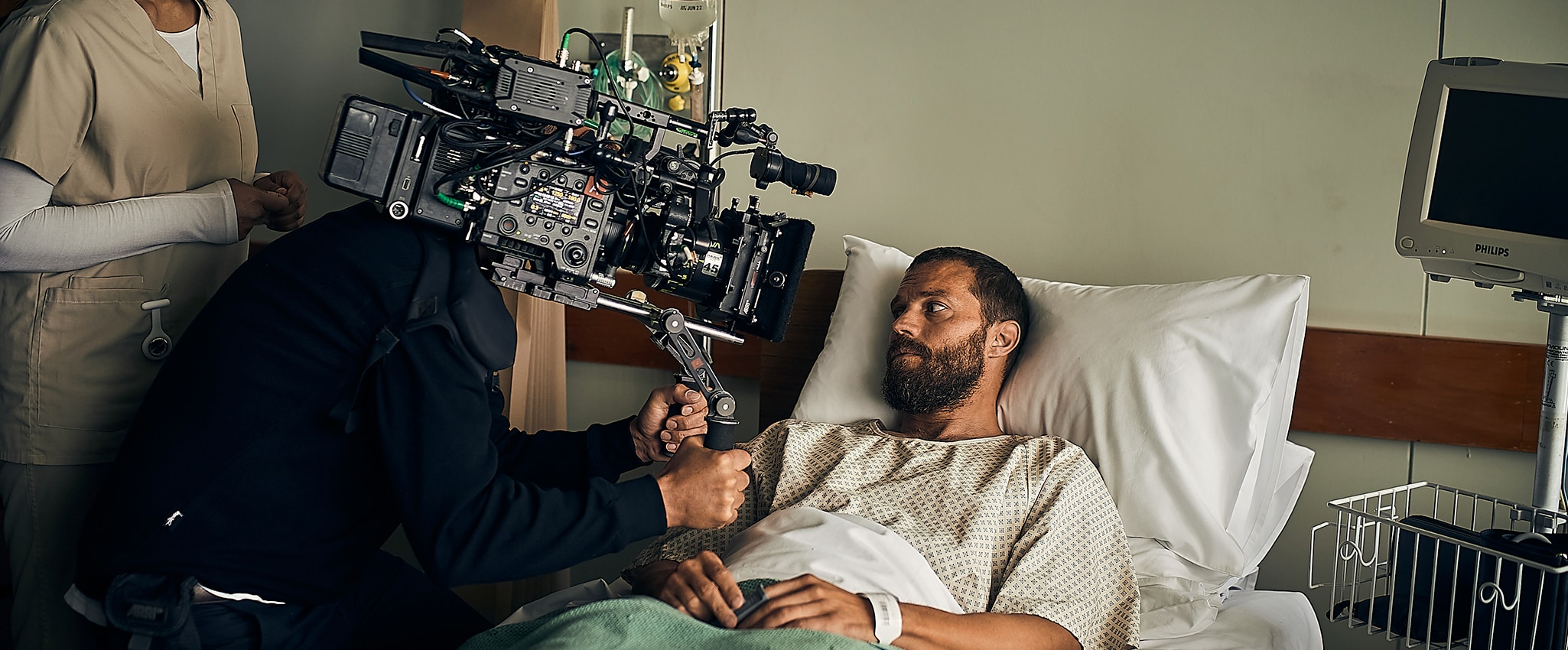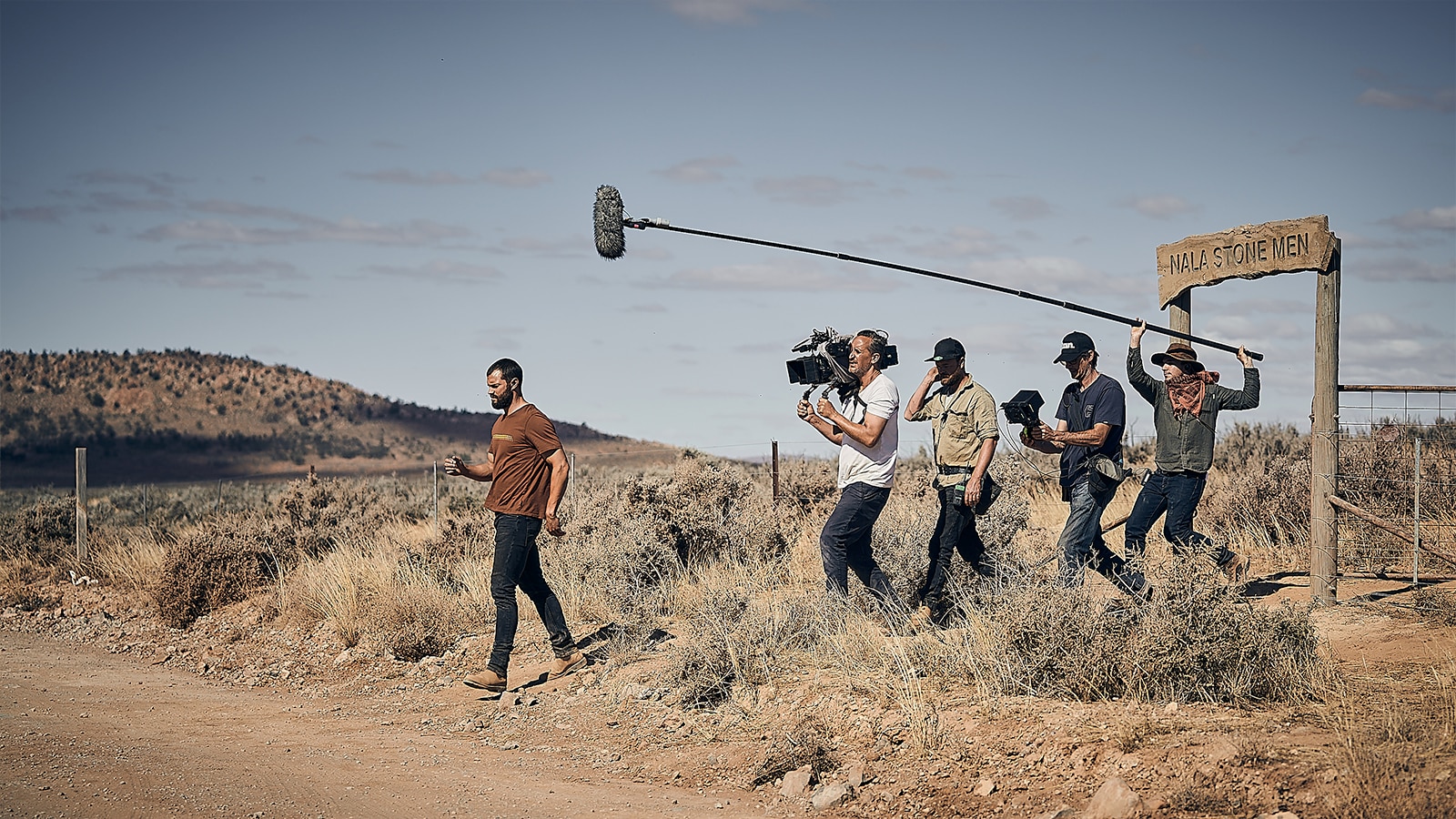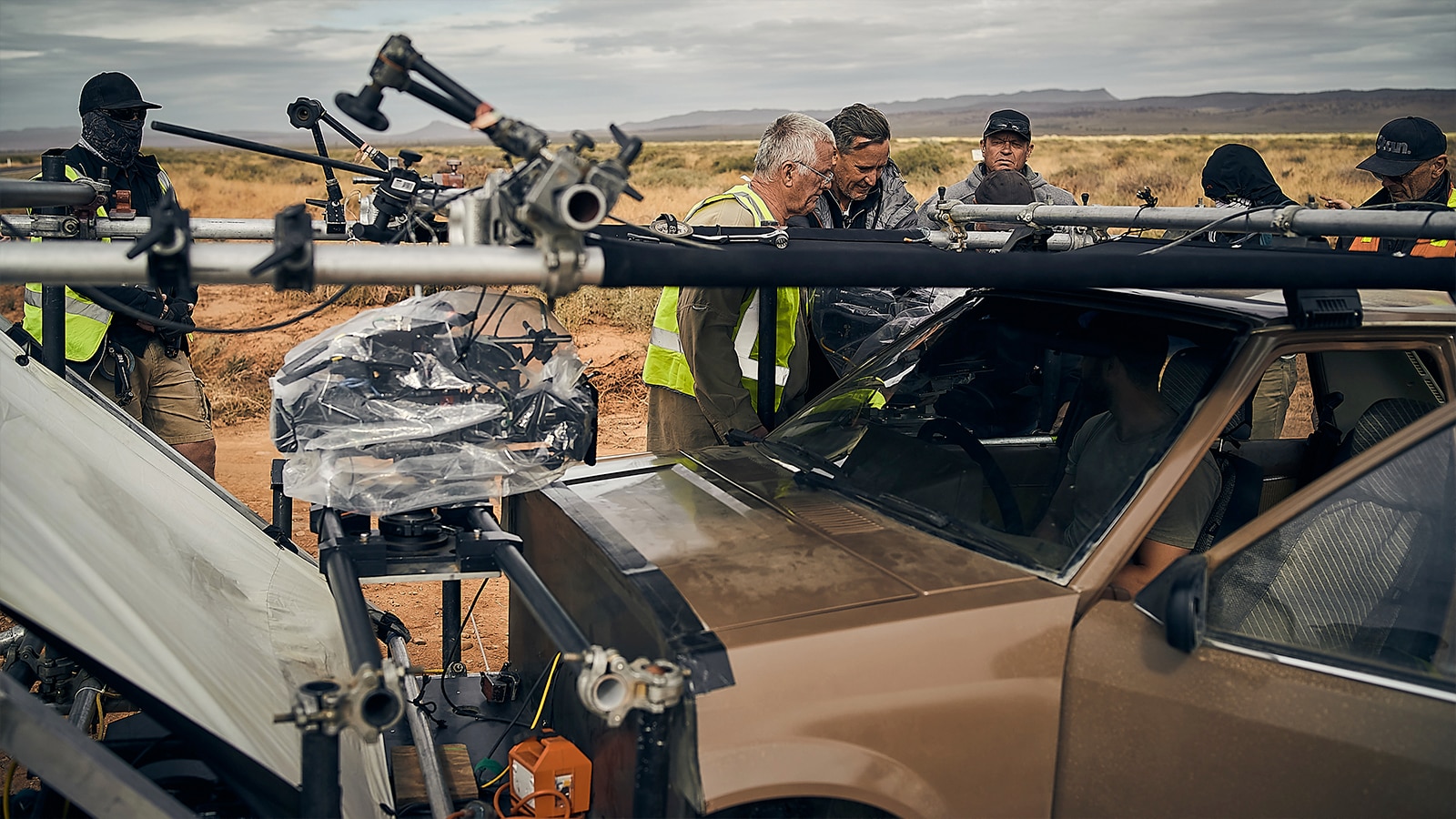Taming the outback with VENICE for BBC’s The Tourist
An interview with cinematographer Ben Wheeler, BSC

It’s hard to imagine a tougher filming environment than the Australian outback. Dust storms. Oppressive heat. Dazzling sunshine. But this was where cinematographer Ben Wheeler BSC found himself shooting acclaimed BBC/HBO thriller The Tourist. Wheeler was DoP on the show’s first three episodes, which was shot over 10 weeks including extensive second unit work by Geoffrey Hall ACS – who went on to shoot the final three episodes. One of the show’s most challenging sequences was a truck chase that itself took around two weeks, including some of that second unit work.

“Dust was the biggest worry,” Wheeler says. “Especially when we had cameras rigged in and on cars. But we wrapped everything up and didn’t have any hitches—even when we created our own dust storm with huge fans and put the cameras right in the middle. They performed brilliantly.”
The camera of choice was VENICE, which Wheeler had become familiar with on the second series of Sky’s Temple.
“To be honest, I wasn’t a big fan of Sony cameras before. I felt that a lot of them didn’t have such a good colour range and the highlights roll off always felt a bit harsh,” Wheeler comments. “The F65 was amazing but it was quite cumbersome and hard to use. There was no way I would ever go handheld with it. Then the VENICE came along and was just like the F65 but in a much more manageable package. The ability to shoot vibrant 4K, with huge latitude on anamorphics—it was great.”

A film print look and rich colours
From the outset, Wheeler and director Chris Sweeney wanted a filmic look for the show. They chose Hawk V-Lite anamorphic lenses for this reason. Then, working with colourist Dan Coles, they created a film print emulation LUT for their production monitors, giving them a picture that was close to the final image.
To make sure they were able to fine-tune any shot they needed, the choice was made to record using the 16-bit X-OCN ST format. This gave Coles all the colour information he needed for post-production adjustments, without taking up as much space as RAW footage.
“Dan said on multiple occasions that it’s really hard to break the image,” says Wheeler. “We were going for a very contrasty image with highlights that were almost clipping in order to accentuate the heat of that hostile environment. There was so much latitude & colour information to play with, we could easily control the highlights and play with the contrast for any given shot. I was also really impressed by the natural skin tones that VENICE was giving us.”

More contrast, latitude and drama
Just minutes into the first episode of The Tourist, it’s clear that the harsh nature of the outback looms large over the entire series. The key visual reference was the Coen Brothers’ No Country for Old Men, so countless shades of brown and beige reinforce the isolation and facelessness of the Australian desert. These combine with the rich contrast between bright highlights and harsh shadows to accentuate the drama on-screen.
As Wheeler says: “One of the reasons I wanted VENICE for this shoot was its ability to deal with highlights and shadows so well. It gives you smoother, softer highlight roll-off than most other cameras and the final image looks so filmic.”
While much of the action is set in blinding sunshine, Wheeler also had to contend with several night-time scenes. Here VENICE’s dual ISO and incredible latitude proved particularly useful. On clear nights, he was potentially able to shoot at ISO2500 and capture the footage he needed, using nothing more than moonlight in those vast open spaces.

Using natural light and unusual viewpoints
One of Wheeler’s favourite sequences comes near the opening of the show, when Jamie Dornan’s character pulls into a service station. He and Sweeney were keen to make sure the interior shots kept a connection with the wild outback outside, and the purpose-built set had large windows that showed off the landscape. Constant sunshine meant that he was able to light the interior of the service station without lamps, shaping the daylight using bounces. The result is a sequence with foreboding shadows, sharp silhouettes, and imposing vistas—but still with a natural, grounded feel.
Between tense dramatic sequences and tender moments of humour and warmth, The Tourist also packs in striking action sequences. When shooting these scenes, the VENICE (CBK-3610XS) extension system proved invaluable, especially for car chases. By separating the sensor block from the main body of the camera (via a 2.7m cable) the crew were able to rig the VENICE in tighter spaces, inside and outside of the cars, for a wide variety of shots. The same extension system was also used for some of the longer handheld sequences, as it effectively reduced the weight carried by the camera op.
Wheeler reports that VENICE’s internal ND filters were invaluable during those days too: “The ability to flick between them, as needed, saved us time, but the fact that they’re internal also meant we didn’t spend time adjusting our lens set-up in incredibly dusty conditions.”

ACES Workflow
The variety of scenes and shots in The Tourist made a challenging shoot even more complex at times, especially as there were about 16 cameras used during the production, including three VENICEs, several drones and a collection of Sony FX3s and FX6s. But by using the ACES workflow, Wheeler was able to steadily manage the colours from the point of capture and get to the final look he wanted.
“We recorded with all the cameras in S-Log3, using S-Gamut3, with the same exposure index as we had for VENICE. That meant we only had to make a few tweaks to bring them all in line.”
All the hard work paid off with a visually spectacular, compelling drama which was a critical and commercial hit – the most watched drama on BBC’s iPlayer as of March 2022 when a second season was commissioned.



